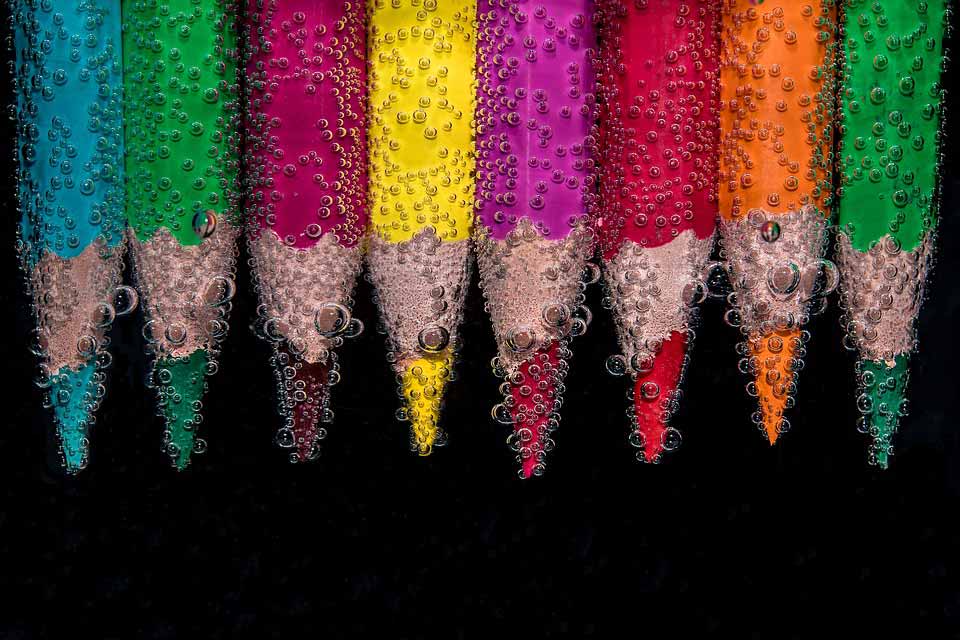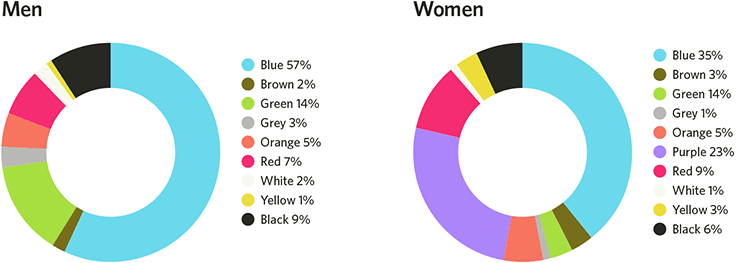Which color do you like to choose as your brand color? is it important? if you want to improve your business it’s better to understand the meaning of colors and use the rules in a way that experts do.
In web design, colors influence where we look, what we click, and how we interpret elements on a website. So as a web designer, it’s important to understand how colors work and how to harness their power.
You’re probably already aware of some basic color psychology, like red meaning danger in western culture, but how we understand color is still mostly subjective. People have personal preferences when it comes to color, usually impacted by our upbringing, experiences and events, and cultural background. Still, there are some common generalities and patterns around how people respond to color, which we’ll explore in this post.

What Colors Mean in web design
Understanding what colors mean to different cultures can help prevent misunderstandings and even insults among people. For example, in western cultures, white is traditionally the color brides wear for weddings and black for funerals, but in India, brides wear red and people in mourning wear white.
Here’s what some popular colors mean to different cultures:
Red in web design
In western cultures, red symbolizes hot, danger, blood and stop signs. In Indian culture, red is a powerful color that means fear, fire, wealth and power, purity, fertility, seduction, love and beauty. In South Africa, red is associated with mourning and the red section on the country’s flag symbolizes violence and the sacrifices that were made during the struggle for independence. In Thai tradition, each day of the week has a color and is linked with a particular god. Red is the color for Sundays and associated with Surya, a solar god. In China, red represents celebration and is meant to bring luck, prosperity, happiness, and long life.
Blue in web design
In western countries, having “the blues” means feeling sad or down. Blue is also a masculine color in western countries and represents the birth of a boy. The opposite is true in China where blue is a feminine color. Middle Eastern countries see blue as the color of safety and protection, symbolizing heaven, spirituality, and immortality.
Green in web design
Green is the national color in Ireland where it’s associated with good luck, shamrocks, Saint Patrick and leprechauns. In western countries, green represents spring, money, inexperience, jealousy, and greed. Most Asian cultures associate green with new and eternal life, new beginnings, fertility, youth, health, and prosperity.
Yellow in web design
In French culture, yellow signifies jealousy, betrayal, weakness, and contradiction. In the 10th century, the French painted the doors of traitors and criminals yellow. In Germany, yellow symbolizes jealousy, while Chinese associate yellow with pornography. In African nations, yellow is linked to people of high rank because of its close resemblance to gold. In Japan, yellow represents bravery, wealth, and refinement.
Pink in web design
Pink is widely acknowledged in western cultures as the color of femininity, love and romance, and the birth of a baby girl. Many eastern countries also associate pink with these meanings. However, in Japan, pink is more of a men’s color then a women’s colors. In China, pink wasn’t even recognized as a color until it was pushed into the culture by western influences. The Chinese word for pink translates as “foreign color.”
It’s easy to associate colors with our personal and cultural understanding on them, but if you’re creating websites, images and other products for people living in different countries, take a minute to think about the colors you’re using next time you start a new project.
If you’re designing something for a Chinese client, it might be best to steer clear of pink in favor of red or green. Meanwhile, clients in Middle Eastern countries might like blue, and wealthy Japanese might like yellow.
Color Preferences for Men and Women
Men and women have different preferences when it comes to color, as discovered by Color Assignment, a research project that examined cultural similarities (and differences) based on color association, preference, and internet activities. The project found that men and women like blue, and while 23% of women like purple, men don’t seem to like purple at all.

Other research in studies on color perception and color preferences have found that when it comes to shades, tints, and hues, men prefer bold colors while women like softer colors.
Color in Online Marketing
Color has a huge impact on how we spend online. In a study titled “Impact of color on marketing,” researchers found that up to 90% of snap judgments made about products were based on color alone, depending on the product. Another study found that for 85% of shoppers, color was the primary reason for buying a product.
Blogger Neil Patel found that when he changed a call-to-action button on his homepage from blue to yellow, his conversion rate increased by 38%.
The Color Assignment study also explored the kinds of words and phrases people associated with particular words, and found that:
- Trust: Most participants chose blue (34%) followed by white (21%)
- Security: Most chose blue (28%) and then black (16%)
- Speed: Red was the overwhelming winner at 76%
- High Quality: Black at 43% and then blue (20%)
- Cheapness: Orange came out on top (26%), followed by yellow (22%)
- High Tech: Almost evenly split, with black a t26% and blue and gray second (both 23%)
- Reliability: Blue won (43%) and then black (24%)
- Courage: Purple (29%), then red (28%)
- Fear/Terror: Red (41%) followed by black (38%)
- Fun: The top color was orange (28%), followed by yellow (26%)
So what are the take aways from these findings for your own website?
When creating a new website or redesigning an existing one, it’s important to understand your target market or audience demographic. If your visitors are mostly men, consider incorporating colors into your design that men prefer (blue, green, black) and focus on using colors that represent the kinds of themes you wanted associated with your site (think: trust, high quality and high tech).
If your audience is predominantly made up of women and you’re selling high-end products, however, you should use colors women prefer (blue, purple, green) and avoid colors recognized as cheap.
Making the Most of Color in Your Next Project
Color hugely influence how we think and feel, and it’s important to put the power of color to use when creating or redesigning a website. While we all have personal preferences when it comes to color, our cultural backgrounds and even gender play a big part in how we interpret color, so it’s vital to take these commonalities into consideration when planning the design of a website.
source: envato